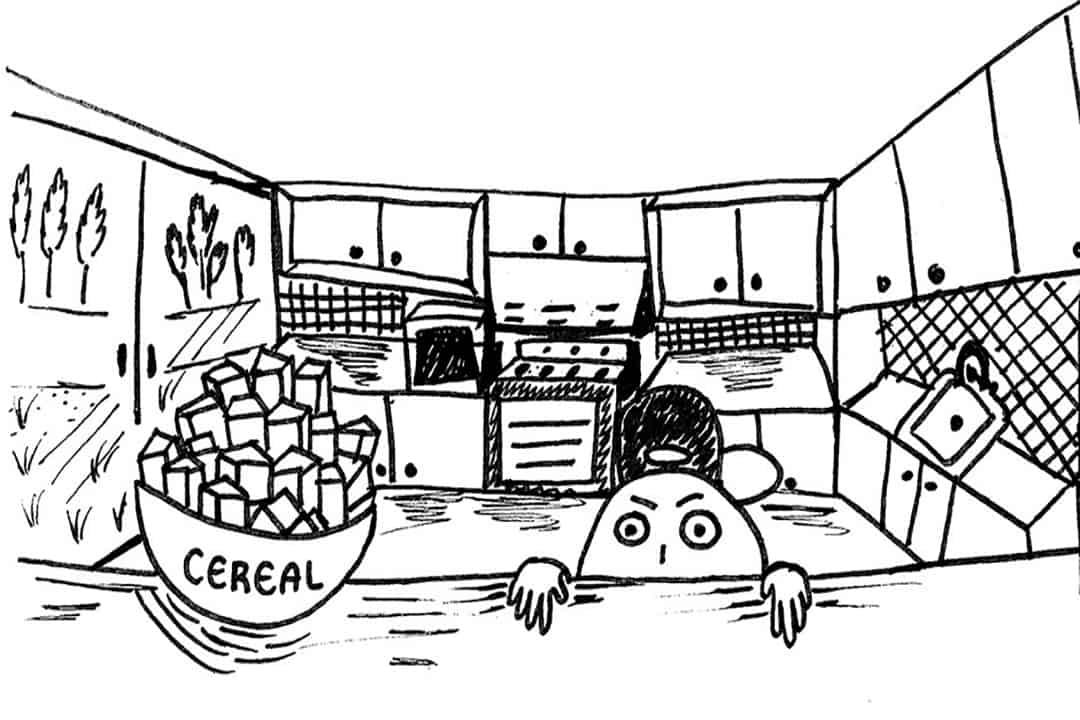Think back to your favourite childhood cereal. Was it Lucky Charms, Froot Loops, or maybe even Cinnamon Toast Crunch?
Think back to the character on the front of the box, the commercials that came between your favourite television shows, and the colourful marshmallows in every spoonful. Now think of the fact that researchers have shown that food packaging is the primary way children interact with different foods.
Most of this child-appealing marketing, or ‘marketing to kids’ (M2K), is used on unhealthy foods that contain high levels of free sugar — or added sugar. A recent U of T-affiliated paper has linked the rise of this type of marketing to a high concentration of sugars in breakfast foods.
The relationship between marketing to children and sugar
Previously, the relationship between M2K and free sugars was not established due to the lack of research on free sugar levels.
The study, co-authored by Christine Mulligan, Dr. Jodi Bernstein, Dr. Anthea Christoforou, and Dr. Mary L’Abbé at U of T’s Department of Nutritional Science, aimed to fill this gap in the literature. They also investigated the potential impact of restricting M2K for products that exceed five per cent of one’s daily value (DV) of total sugar.
This cross-sectional study used the University of Toronto Food Label Information Program (FLIP), a database which was created in 2013 with over 17,671 prepackaged beverages and foods from retailers in Canada. Once the M2K on the product packaging became an object of interest, the researchers categorized all the FLIP 2013 products into sugar-focused categories and compared sugar levels across similar foods.
The co-authors found that 92 per cent of cereals with M2K have excessive amounts of sugar. Therefore, the presence of M2K on products predicts high sugar levels in the product itself.
The link between marketing and sugar
Unhealthy food, as defined by Health Canada, includes products with a total sugar, sodium, or saturated fat content that exceeds roughly five to 10 per cent of the DV.
Since ‘total sugars’ is an extremely broad term, it is important to specifically look at free sugars to isolate truly unhealthy foods. Researchers have shown that the marketing for these foods has influenced purchasing requests, taste preferences, and consumption patterns of children.
According to the World Health Organization, unhealthy foods and marketed preferences may contribute to a worldwide increased prevalence of non-communicable diseases, such as obesity.
Childhood obesity has been shown to be a strong indicator for adolescent and adulthood obesity, which can increase the risk of chronic diseases such as type 2 diabetes, cancer, hypertension, stroke, and heart disease.
“As of 2019, it is estimated that over 150 million children in the world are obese and that this will increase to 206 million by 2025,” noted the Childhood Obesity Foundation.
What is being done to prevent this?
In 2016, Bill S-228 — The Child Health Protection Act — was proposed by Health Canada as part of its Healthy Eating Strategy, with the ultimate goal of improving the nutritional quality of Canadian diets, and restricting the marketing of unhealthy foods specifically to young children.
“As of now, Canada doesn’t have nation-wide legislation restricting the marketing of unhealthy foods and beverages to children. Bill S-228 failed to pass before Parliament dissolved for the 2019 federal election,” Bernstein wrote to The Varsity.
The results from the study support the five per cent total sugar DV proposed in Bill S-228, compared to the previous 15 per cent. Future steps include regulating product packaging to children and reducing the threshold for total sugars to five per cent, so products with excessive free sugar will not be marketed to children.
“Consumers may want to be especially [wary] of foods and beverages marketed to children as they may be higher in free sugars than similar products without the same marketing on it,” he noted.


